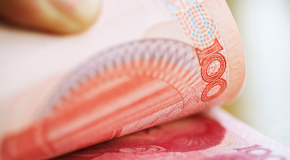In the summer of 2019 The Economist Intelligence Unit asked global institutional investors and asset owners which sectors in China they found most attractive. Technology was cited by 58%,1 making it the top answer above financial or healthcare services. Although trade tensions had started ramping up at that time, a majority of survey respondents still expected to boost exposure to China’s economy. Since then, US-China trade tensions have tightened into talk of “decoupling”, threatening to tear apart a relationship that has buoyed international stock markets for years. While the political effect is polarising and immediate implications for firms involved in global trade can be destabilising, the disputes bring a different balance of risk and reward from an investment perspective.
Made in China 2025
The story of China’s economic transformation into “the world’s factory” isn’t new or even finished yet. But the current chapter is about moving up the value chain. The “Made in China 2025” initiative identifies ten priority sectors with a range of plans and policies aimed at generating “innovation-driven development” and Chinese self-sufficiency in a variety of industries,2 such as artificial intelligence (AI), Internet of Things (IoT), biotech and semiconductors. Containing few hard targets, an overarching goal appears to be displacement of foreign technology in favour of Chinese versions—up to a 70% share for China’s domestic market.
“[China’s] strategy is not entirely different from that of South Korea or Japan earlier,” says Marcin Piatkowski, senior economist at the World Bank in Beijing. “But the process could be more transparent, especially in terms of who gets financial support. There are many sources of funds to support companies, but it’s sometimes difficult to know where it is all going. More than half of China’s research and development (R&D) spend is at the regional level.”
Calling “Made in China 2025” a blueprint for advancement or protectionism is a political decision; on a practical side, it’s likely to mean a shifting of corporate profits from west to east. BCG, a management consultancy, has developed several scenarios to measure impact. It reports: “Our model indicates that [supplier substitution] will deepen the revenue loss coming from the Chinese market to US semiconductor companies by an incremental 30% to 40%.” If US companies in that supply chain lose Chinese buyers it would hurt their profits considerably, but it could prove a boon to non-US firms.
“The example of the semiconductor industry shows the challenges China faces,” says Andrew Gilholm, principal and director of analysis at Control Risks, a consulting firm. “Even though it has made rapid progress—the pace of development is extraordinary—there is still a significant gap from here to where they want to be, where they don’t need imports. So while they are trying to bridge that gap, they can’t afford to scare off foreign investors or provoke export controls from the US because they are still vulnerable.”
China’s advantage?
With a massive domestic market, many Chinese companies have not had to look abroad for growth. The digital economy is a good example of where Chinese tech companies have rapidly leapfrogged foreign counterparts as they innovate in the local market. With the development of “super apps” and whole ecosystems of commerce contained in one platform, companies like Alibaba have flourished. It now has a 56% share of the Chinese e-commerce market— greater than Amazon’s share of the US market—and was easily able to fend off a local challenge from US rival eBay.3 So absolute was eBay’s defeat in China that typing the phrase “eBay in China” into Google’s search engine auto-completes with “failure”.
That dynamic has given rise to a global anxiety which has led China to tone down its “Made in China 2025” rhetoric but not its plans, according to Mr Gilholm. “They are doubling down on their industry level plans but pursuing them in a way that is less threatening,” he says. “However the sense of urgency to develop domestic capabilities has only increased, even more so in the past year with the sanctions and actions against Huawei, WeChat [from Tencent] and TikTok [from Bytedance]. It is full steam ahead, but repackaged.”
“Chinese companies have been able to build capacity and muscle owing to the size of the domestic market and the fact that they have been somewhat insulated from competitive pressures,” says Mr Piatkowski. “There are a couple of areas in which China is a global leader that might be less affected by geopolitical changes: the digital economy, logistics and medical equipment.”
For more on how China’s domestic healthcare sector is growing and creating investment opportunity, see The Economist Intelligence Unit article: “Healthy China 2030” policy could be a blueprint for investment opportunity.
Pursuing growth despite uncertainty
Chinese tech companies, of course, see a chance to benefit from decoupling. Chinese President Xi Jinping’s announcement of a “dual circulation” policy—making domestic consumption China’s economic growth engine and securing supply chains in critical industries—has raised domestic hope of government support, particularly for tech companies.4
That skewing of the playing field is putting off some foreign companies, but not all. China was the largest recipient of foreign direct investment (FDI) in Asia in 2019, with companies such as BASF, Volkswagen and Daimler (Germany), Exxon Mobil and Tesla (USA), and Toyota (Japan) remaining major investors.5 In mid-2020, about 15% of US companies operating in China told the US- China Business Council in a survey that they were moving at least part of their operations out of China, and 24% said they had reduced or stopped planned investments in the country (up from 19% in 2019). However, it also found that compared with 2019 more US companies now consider China a top strategic priority (16%) and top-five priority (83%).6 By August 2020 FDI into China had already climbed to US$89bn—a 2.6% year-on-year increase—and although trade clashes show no signs of dampening, August alone saw FDI jump by 18.7%7. So actions still speak louder than words; and labour costs—more so than trade or tech tensions—still appear to be the driver of any supply chain migration.
China’s growth potential is unparalleled and its economy remains one of the few that The Economist Intelligence Unit forecasts to show any GDP growth at all in 2020. Many Western firms, such as Schneider Electric, a European electronic components and systems manufacturer, have set up in China not just to supply global markets but to serve the local market under a “China for China” strategy. Unwinding such investments is much easier said than done.
Still, decoupling pressures may drive US firms to make political decisions rather than business ones. The US-China Business Council survey found 86% of US companies with business in China have been impacted by US- China trade tensions.8
The environment for foreign tech companies varies considerably by sector, according to Mr Gilholm. “For example, with semiconductors and other advanced parts like memory, companies like Intel and Toshiba are still operating in China,” he says. “There hasn’t been much of an exodus but it’s not paranoid to say that dominant foreign companies will only stay that way for as long as it takes China to catch up. China has been such a big part of companies’ global growth strategies it would take a lot for them to abandon the market, but they are hedging their bets and taming expectations.”
Chance for a reset?
Ahead of the US presidential election, the question is whether a change of administration would radically change this environment.
The Economist Intelligence Unit says China and the US have been on a collision course for the better part of a decade and there is little prospect of improved relations even if Joe Biden wins. However, the US handling of the conflict would look different. Under Mr Trump, foreign policy has been isolationist, withdrawing from multilateral bodies to remove any restraints on US power.9
“The election result won’t change plans,” Mr Gilholm says. “[Joe] Biden isn’t calling for going back to the pre-Trump status quo and the fundamentals that have been driving this for years, even before Trump, haven’t changed. But do expect a change in style. [US secretary of state] Mike Pompeo is using strong language, describing China as an existential threat, an enemy. That would go, as well as the use of executive orders, [if Mr Biden becomes president].”
Whether or not the US steps up pressure on China it’s still likely to pursue a self-sufficiency agenda, according to BCG models. Under the status quo, US firms in the semiconductor supply chain, for example, might see as much as a 30% drop in revenue in a case where Chinese buyers seek to diversify supply but not eliminate US sources. Under a model where China has to replace US suppliers, the drop could be 40%. Beneficiaries, in that case, would be companies in China, South Korea, Japan and Europe.10
The extent to which the US and China push decoupling will determine how technology develops around the world. Countries may be forced to choose which to work with exclusively, especially for critical infrastructure. Already pressure from the US has resulted in the UK government banning its mobile carriers from buying new Huawei 5G equipment after December 31st 2020 and forcing them to remove all Huawei 5G kit from their networks by 2027.11
Chinese tech companies may find it more difficult to work in the West, but they can still pursue global ambitions by offering financial or technical support to countries covered by China’s Belt and Road Initiative. The Economist Intelligence Unit forecasts that: “China and the US will increasingly exert their leverage over third parties to the extent that a neutral stance becomes economically prohibitive. A gradual bifurcation in the global economy would be a slow-moving trend initially, but its longer-term impact would be significant...trading blocs that are torn between the US and China would face significant political tensions.”12
Decoupling is not yet a foregone conclusion. FDI into China is still flowing and if the country does reduce dependence on foreign high- tech, as advocated by the “Made in China 2025” strategy, that still offers opportunity to international investors, especially the 58%13 who already marked Chinese tech as a top sector of interest a year ago.
The report was written by Monica Woodley and edited by Jason Wincuinas.





